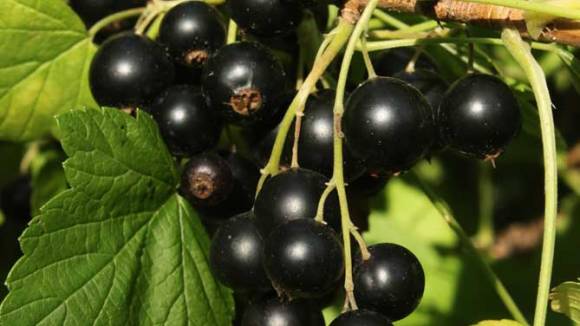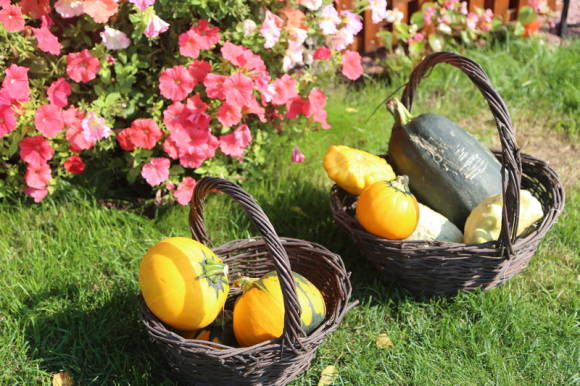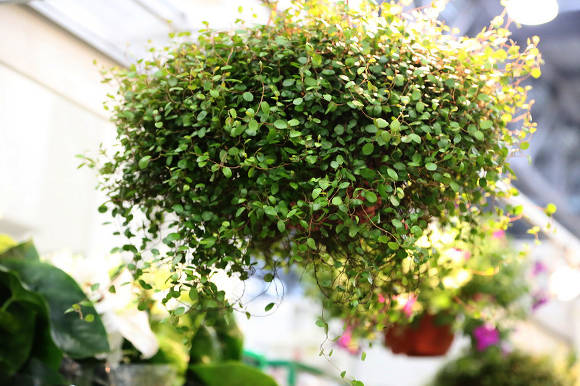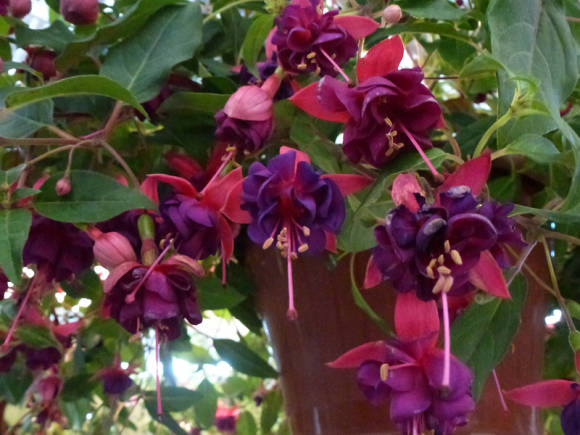Growing
 Meadowsweet (Filipendula ulmaria) and palm-shaped (Filipendula palmata) grow on damp meadows, the banks of natural and artificial reservoirs, in damp forests (that is, they withstand some shading), prefer areas with good soil aeration, flowing moisture, without constant stagnation of water - accordingly, the soil for them should be sufficiently loose and well-permeable.
Meadowsweet (Filipendula ulmaria) and palm-shaped (Filipendula palmata) grow on damp meadows, the banks of natural and artificial reservoirs, in damp forests (that is, they withstand some shading), prefer areas with good soil aeration, flowing moisture, without constant stagnation of water - accordingly, the soil for them should be sufficiently loose and well-permeable.Even steppe meadowsweet(Filipendula stepposa) and ordinary (Filipendula vulgaris) - Plants of meadow steppes, fallow lands, shrubs, edges of light forests, suffer from prolonged drought: in dry years, meadowsweet completely loses its leaves in summer and begins to grow only in autumn (botanists call this feature a semi-femeroid type of development).
Meadowsweet predominates in places with good illumination, but at the same time they tolerate shading well by other, more powerful plants. These are shade-tolerant plants, although they are most effective in open sunny meadows. If you propagate plants by seeds, then remember that meadowsweet seedlings cannot stand direct sunlight and the garden bed or box with them should be under the canopy of trees (but not in absolute darkness!). Steppe and common meadowsweet are more light-loving than visleaf and palm-like meadowsweet.
Reproduction
Now about what to do if you managed to get only the seeds. A feature of meadowsweet is that the shell of the fruit is waterproof, which, along with the presence of deep physiological dormancy of seeds, makes it difficult to germinate. Although the depth of this very peace is often individual. This is manifested in the fact that in nature the germination period is extended, part of the seeds germinate in the harvest year, part - at the beginning of the next summer, after natural stratification.
To obtain seedlings at home, all traditional methods are used: they are stratified at low temperatures in a refrigerator or under the snow, treated with growth regulators, micronutrient solutions, scarified, soaked in water for up to a week, or alternated with soaking and drying. And it is optimal to combine, for example, soaking in Ribav-Extra or Epin-Extra for 2-3 days with further sowing in a pot, which is placed in a refrigerator or buried in snow. 
Scientists have found that meadowsweet seeds are photosensitive, that is, they should not be covered with soil. In laboratory conditions, the optimal conditions for obtaining seedlings were temperatures from +17 to + 25 ° C in combination with variable (natural) lighting. But I think that you should not make your life so difficult at home, but limit yourself to the previous recipes.
It may happen that there will be no result. This is not always the fault of the seed seller. Seeds of meadowsweet of different years of collection and grown in different environmental conditions have different germination and germination friendliness, seeds collected from dry habitats have the best germination. Germination can last up to 6 years, although it will be lower.
Reproduction of meadowsweets by sowing seeds directly into the ground gives satisfactory results provided that three conditions are met: high soil moisture, pre-sowing treatment of seeds with stimulants, which increases their germination and subsequent shading of seedlings, since they grow slowly and are accustomed to the fact that in the first period of life in the grass stand there is no direct sunlight. rays, and the air is more humid than on an open, windswept surface. They grow very slowly: they form a rosette in the 2-3rd year, bloom in the 9-10th year. In cultural conditions, of course, everything happens faster, but it still takes 3-4 years. Therefore, it is best to use vegetative propagation whenever possible.It is carried out either with the help of special formations - root nodules (meadowsweet), stolon-like rhizomes (meadowsweet, red), root suckers (common meadowsweet, elm-leaved).
For vegetative propagation in culture (in the North-West of the Russian Federation and the Far East), autumn planting is preferable, which is associated with the high winter hardiness of these species - on the one hand, and the ability to maximize the use of soil moisture reserves in spring - on the other hand.
Medicinal and useful properties and their application
Considering that the meadowsweet is worthy of its own extensive article, let's talk about its lesser-known relatives.
Hand-shaped meadowsweet (Filipendula palmata) contains essential oil, flavonoids (2.6 - 3.3% - kaempferol, quercetin, hyperoside), saponins, alkaloids, up to 250 mg% of vitamin C in the leaves, tannides (4-10% - in the aerial mass, 14-15% - in rhizomes).
Decoctions and tinctures of the aerial parts of the plant have an astringent, vaso-strengthening and antimicrobial effect. The roots, which contain tannins, are used as a styptic and astringent.
In folk medicine, it was used for rheumatism and epilepsy. It has a certain diuretic and anti-inflammatory effect, and therefore its use as a remedy for salt deposition is quite justified. They mainly use inflorescences, which, like the meadowsweet, are used in the form of a decoction or infusion. Moreover, it is better to combine internal use with baths and compresses. The people used the powder of inflorescences from moths, laying them out in the closet with clothes. But my personal experiments did not lead to the desired result.
And finally, the plant is a wonderful honey plant.
 |  |
Kamchatka meadowsweet, or Shelomainik(Filipendula camtschatica), like other species, contains tannins, vitamin C and flavonoids. It is used in the form of decoctions, infusions, powder in folk medicine of the East for problems with blood vessels, as an astringent and general tonic.
Fish and meat are baked in fresh large leaves of Kamchatka meadowsweet in Kamchatka, the Kuril Islands and Sakhalin, its young shoots, raw and boiled rhizomes are edible.
Common meadowsweet contains up to 30 mg% of vitamin C (raw weight), 5.5-7.8% of tannins in the grass, there are references to the presence of essential oil, gaulterin, traces of coumarins in the roots and aboveground mass, as well as quite a lot, up to 3.28%, flavonoids (spireoside, avicularin, quercetin, hyperoside).
In folk medicine, it is used as a strong diuretic and anti-hemorrhoid agent. But unlike, for example, meadowsweet, the main part used is the roots.

Common meadowsweet (Filipendula vulgaris), or rather, its aboveground part, is used in domestic folk medicine in almost the same way as meadowsweet. It has astringent and diaphoretic properties, flowers and roots are one of the best adjuvants in the treatment of articular rheumatism, a decoction of them is used for enterocolitis, helminthic invasion, as a hemostatic for various internal bleeding, for hemorrhoids (which is associated with a high content of tannins). It is also used for hypertension, diseases of the nervous system. Powder of flowers is sprinkled on burns and diaper rash of the feet. In Bulgarian folk medicine it is used as a diuretic for cardiac and pulmonary edema, kidney stones. The medicine of the peoples of the Caucasus uses a decoction or infusion of nodules for female inflammatory diseases and rheumatism. In the collection it is used in the treatment of liver cirrhosis and to enhance lactation.
The experience of using meadowsweet by practicing phytotherapists has shown that its root nodules effectively regulate the level of thyroid hormones and can serve as the basis for creating a new drug.This is a very interesting possibility of its use, since there are very few plants with such an effect.
And in European winemaking, inflorescences are used similarly to meadowsweet for aromatization of wines.
Read the article The meadowsweet is a rival of aspirin.









